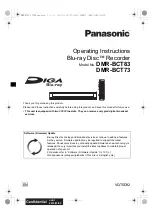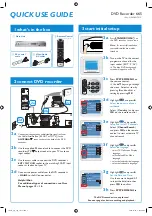
5-7
IM DR231-01E
Setting the Input Type/Recording Span/Linear Scaling
5
Setting the Channel Number
This procedure sets the channel number for which you want to show and record the values of a
parameter selected from the effective voltage, effective current, active power, reactive power,
apparent power, frequency, power factor and phase angle which were calculated using the
measured data. Therefore, it does not correlate with the terminals of an input module. In this
procedure, determine from which channel (starting channel) to which channel (ending channel)
you want to include in your configuration.
Starting Channel Number
The first three digits on the main display constitute the starting channel number.
• The first digit is the unit number. The second digit denotes the module number (slot number).
• The configurable range depends on the location where the power monitor module is connected.
See page 3-8 for more information.
Ending Channel Number
The two digits that follow the starting channel number constitute the ending channel number.
Normally, the starting channel number and the ending channel number should be the same. If you
want to skip any consecutive number of channels, enter the range of those channel numbers.
• When you move the cursor from the starting to the ending channel number, the ending channel
number becomes the same as the last two digits of the starting channel number.
Setting the Wiring Method
Select from the following methods:
Single-phase two-wire (1Ph2W)
Single-phase three-wire (1Ph3W; three-wire input modules only)
Three-phase three-wire 2 Voltage 2 Current (3Ph3W-2I; three-wire input modules only)
Three-phase three-wire 3 Voltage 3 Current (3 Ph3W-3I; three-wire input module only)
Three-phase four-wire (3Ph4W; three-wire input modules only)
Setting the Input Range
Select from the following ranges:
250V-0.5A
250V-5A
25V-0.5A
25V-5A
This setting is common to all channels. Any change to this setting also changes the settings of the
rest of the channels. Impose a voltage or current signal to the input module within the limits you
set here.
Setting the Parameter Being Shown and Recorded
A power monitor module measures the voltage or current through the respective channels. The
values that are shown and recorded are not those of the voltage and current being actually
measured through each channel but the values of the parameters you set here.
A combination of parameters being measured is fixed for each group of channels 1-2, 3-4 and 5-6
within the same module. For example, setting channel 1 to P1 (active power 1) sets channel 2 to
VA1 (apparent power 1). In addition, the configurable parameters being measured varies
depending on the wiring method selected. See the lists on the next page for more information.
The respective mnemonics in the lists should be interpreted as noted below:
Vi (i=1, 2, 3) : effective voltage
Ii (i=1, 2, 3) : effective current
V13 : (V1+V3)/2
I13 : (I1+L3)/2
V0 : (V1+V2+V3)/3
I0 : (I1+I2+I3)/3
Pi (i=1, 2, 3) : active power
Vari (i=1, 2, 3) : reactive power
P13 : P1+P3
Var13 : PF1+PF3
P0 : P1+P2+P3
Var 0 : Var1+Var2+Var3
VAi (i=1, 2, 3) : apparent power
PFi (i=1, 2, 3) : power factor
VA13 : VA1+VA3
PF13 : P13/(P13
2
+Var13
2
)
1/2
=P13/VA13
VA0 : VA1+VA2+VA3
PF0 : P0/(P0
2
+Var0
2
)
1/2
=P0/VA0
PHi (i=1, 2, 3) : phase
FREQ : frequency
PH13 : tan
–1
(Var13/P13)
PH0 : tan
–1
(Var0/P0)
5.3 Configuring the Input Range and Recording Span or the Linear Scaling of a Power Monitoring Channel
Summary of Contents for DR231
Page 12: ...10 IM DR231 01E...
















































